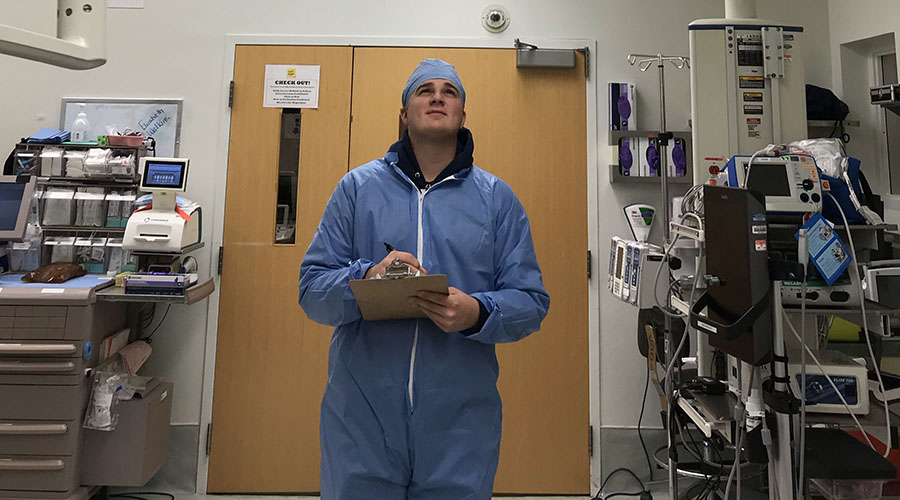The University of Virginia (UVA) employs approximately 1,200 facilities maintenance employees who work every day to keep electrical and plumbing, HVAC and chiller systems functioning in its educational buildings and hospital and research facilities.
A staff this size experiences its share of attrition through retirements and job switches.
But when UVA needs a new employee, there’s usually a candidate ready to step into the role among apprentices in the UVA Facilities Management Apprenticeship Program. While UVA isn’t immune to the facilities management labor shortage, its nearly 40-year-old apprenticeship program keeps the technician pipeline full.
“In a given year, we have around 60 people in our apprenticeship program and we graduate about 15 people a year,” says Brian Shifflett, UVA apprenticeship program manager. “About 80 percent of those graduates stay with us, some for their entire career.”
UVA has stepped ahead of the curve in the growing technician shortage and plans to stay there. Each year, Shifflett partners with human resources and zone managers to identify upcoming vacancies by maintenance zone and skill set (HVAC, electrical, plumbing, masonry, etc.). This information helps Shifflett develop replacement technicians before seasoned workers retire, taking their institutional knowledge with them.
“It’s easier to hire someone as an apprentice, teach them on the job and in the classroom, and in four years you’ve groomed someone that not only graduates with state certification and licensing but knows your equipment too,” he says.
UVA’s successful program attracts notice from companies and universities across the country as they struggle to fill openings. Shifflett happily shares their success story to help others navigate a growing gap in skilled laborers for facility maintenance.
The labor problem
UVA identified the need to manage labor shortages in the 1980s, but not every operation has been as forward thinking. Today, many organizations struggle to find competent talent to fill vacancies as skilled technicians retire, says John Prelesnik, manager of Building Operations Technologies for MD Anderson Care Center at the University of Texas.
The annual Manpower Talent Survey again sounded the alarm on a massive talent shortage plaguing the United States. Sixty-nine percent of U.S. companies taking part in the 2020 survey reported talent shortages — the highest percentage struggling to fill skilled jobs in over a decade.
And the facilities management industry is not immune to the problem. The International Facility Management Association (IFMA) reports there will be between 50,000 and 100,000 facility management jobs to fill in the next decade.
“But it’s not just facilities management,” says Andy Gager, a former operations manager and owner of AMG International Consulting Inc. “It’s all industries with maintenance. There’s not a single strip mall or building without a vacancy sign on it.”
The difficulty attracting blue-collar workers is a multi-faceted problem. Baby Boomers retiring at record rates tops the concerns. But the pandemic, enhanced unemployment benefits, the perception that these are dirty jobs, and more, also factor in.





